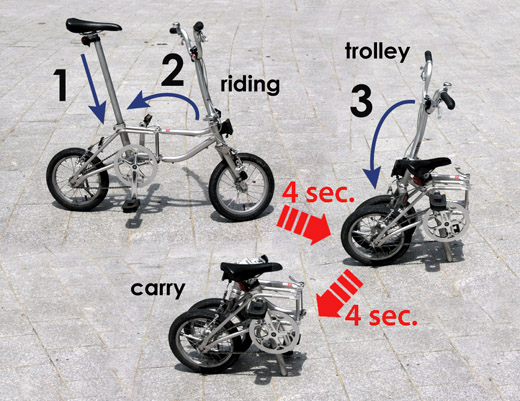Asheville, NC is one of my favorite towns in the states. Everyone is buying houses in Asheville including President Obama. Asheville is special for many reasons; it is close to the best east coast wastewater kayaking on the Chattooga. It is also close to some of the best hiking in the states, it does not get hot in the steamy summer months, and is home to two of the coolest College campuses UNC Asheville, and Warren Wilson College. The Downtown has an eclectic mix of an old artsy town; there are not too many cities like this in the South. There is a good reason so many celebrities are moving there.
Recently I was in the market for a house in the Asheville area however I lived 10 hours away. I searched online and found a great deal on a log cabin home just north of Asheville, not far from UNC Asheville. I got a flight and brought my Downtube full size folding bikes with me in a soft suitcase. I jumped on an early flight to Asheville. We landed at11 AM leaving me plenty of time to see the house and hang out at UNCA one of the coolest college campuses in the western hemisphere!
I was going to take a taxi but there was bus service at the airport. The best part it only costs $1. So I unpacked my bike from the soft suitcase and collapsed the soft case onto the rear rack. I attached it with one bungee. On the plane I had my bikepacked in the suitcase, but once I arrived I have the suitcase packed on the bike, this is a great concept for traveling. I never considered doing this before, it just worked out on this
I got on the bus and I was complimented on my bike by everyone. I guess you could say I made a lot of friends on the ride. I had to transfer busses to get to UNCA campus. I biked to the house from there. Unfortunately it was half log cabin. The house was in poor condition, so I did not buy it, but I still had plenty of free time to play. So I biked back to UNCA for the evening until my 8PM flight.
Got back to airport took the soft case off the rack, put the bike inside. Checked it in and was home in no time. No baggage fees no hassles. I thought to myself this is the way to fly. I was completely self-sufficient, and it cost me about $20 on food and transportation to spend the day biking around UNCA, and downtown.
On my next trip to Asheville I will take an extra day to stop in Biltmore Estates which is private estate and tourist attraction in Asheville. I will also book a trip on the Chatooga with wildwater at http://wildwaterrafting.com/rafting/chattooga-river-rafting/. Make sure to book the Chatooga section IV, it will blow your mind.
Recently I was in the market for a house in the Asheville area however I lived 10 hours away. I searched online and found a great deal on a log cabin home just north of Asheville, not far from UNC Asheville. I got a flight and brought my Downtube full size folding bikes with me in a soft suitcase. I jumped on an early flight to Asheville. We landed at11 AM leaving me plenty of time to see the house and hang out at UNCA one of the coolest college campuses in the western hemisphere!
I was going to take a taxi but there was bus service at the airport. The best part it only costs $1. So I unpacked my bike from the soft suitcase and collapsed the soft case onto the rear rack. I attached it with one bungee. On the plane I had my bikepacked in the suitcase, but once I arrived I have the suitcase packed on the bike, this is a great concept for traveling. I never considered doing this before, it just worked out on this
I got on the bus and I was complimented on my bike by everyone. I guess you could say I made a lot of friends on the ride. I had to transfer busses to get to UNCA campus. I biked to the house from there. Unfortunately it was half log cabin. The house was in poor condition, so I did not buy it, but I still had plenty of free time to play. So I biked back to UNCA for the evening until my 8PM flight.
Got back to airport took the soft case off the rack, put the bike inside. Checked it in and was home in no time. No baggage fees no hassles. I thought to myself this is the way to fly. I was completely self-sufficient, and it cost me about $20 on food and transportation to spend the day biking around UNCA, and downtown.
On my next trip to Asheville I will take an extra day to stop in Biltmore Estates which is private estate and tourist attraction in Asheville. I will also book a trip on the Chatooga with wildwater at http://wildwaterrafting.com/rafting/chattooga-river-rafting/. Make sure to book the Chatooga section IV, it will blow your mind.


